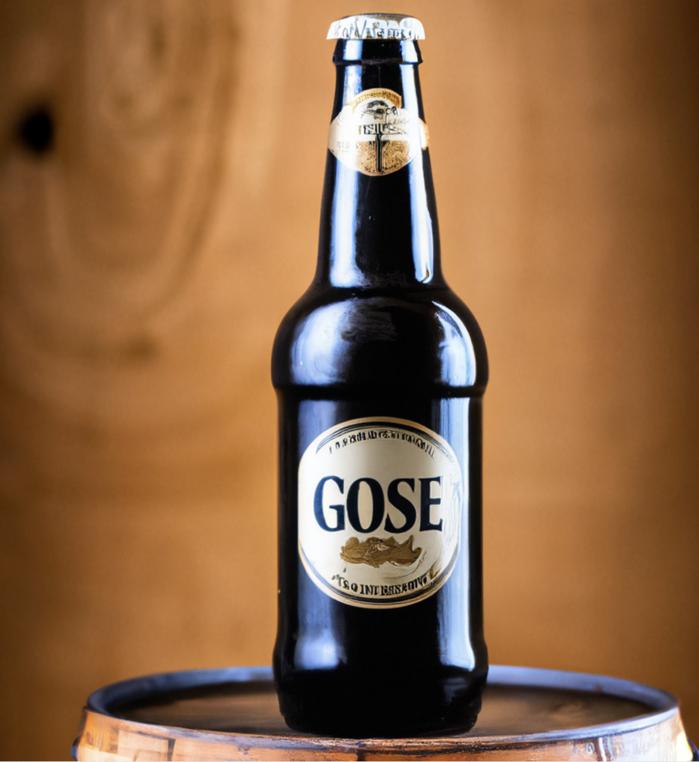Salted beer – is it a thing? Yes, it is! Salted beer, also known as Gose, is a traditional German beer style that has been around for centuries. It’s a sour, slightly salty, and spiced beer, which has gained popularity in recent years due to the growing interest in sour and unique craft beers.
In this blog post, we’ll dive deep into the world of salted beer and learn about its history, brewing process, and more. So, let’s get started!
1. History of Salted Beer (Gose)
Gose, pronounced “go-zuh,” is a beer style that originates from the town of Goslar, Germany. It dates back to the 16th century, and its name comes from the Gose River, which provided the local water source for brewing this unique beer. The style eventually became popular in the nearby city of Leipzig, where it became a signature beer.

During the 20th century, Gose almost disappeared due to the two World Wars and the rise of lagers and pilsners, which were easier to brew and more popular among drinkers. However, in the past two decades, Gose has seen a resurgence in popularity, particularly in the United States, where craft brewers have been experimenting with this classic style and creating modern interpretations.
2. The Brewing Process
The brewing process of Gose is quite unique compared to other beer styles. It starts with a base of malted barley and wheat, and the wort is then soured using lactobacillus bacteria. This process creates a tart, tangy flavor that is a hallmark of Gose.
The beer is then boiled, and during this stage, hops are added for a slight bitterness. However, the hop presence in Gose is minimal compared to other styles.

The most distinctive aspect of Gose brewing is the addition of salt and coriander. The salt traditionally comes from the local water source, which has a high mineral content, but modern brewers often add sea salt or kosher salt to achieve the desired salinity. The coriander adds a subtle citrusy and spicy note to the beer.
How much salt is in a normal beer? Read more in my post on the salt content of beers here!
Finally, the beer is fermented with ale yeast, which contributes to the fruity and slightly spicy flavors. Gose is typically fermented at a lower temperature than most ales, which helps to preserve the sour character of the beer.
Here is a table listing some different beers and their sodium content per 12-ounce serving:
| Beer Brand | Sodium Content (mg) |
|---|---|
| Budweiser | 10-10.6 mg |
| Miller Lite | 16 mg |
| Coors Light | 18 mg |
| Heineken | 11 mg |
| Corona | 14 mg |
| Guinness Draught | 11 mg |
| Sierra Nevada Pale Ale | 6 mg |
| Gose | 140-560 mg |
A table showing some different beers and their sodium content.
3. Flavor Profile
Gose is known for its unique combination of sour, salty, and slightly spicy flavors. The base of the beer is wheaty and bready, with a touch of malt sweetness.
The sourness from the lactobacillus bacteria provides a refreshing tartness that is balanced by the saltiness. The coriander adds a subtle citrus and spice character, while the hops contribute a slight bitterness.
The overall flavor profile of Gose is complex and refreshing, making it a perfect beer for warm weather and outdoor drinking. It’s also a great option for those who enjoy sour beers, as it offers a unique twist on the traditional sour beer experience.
4. Food Pairings
Gose’s unique flavor profile makes it an excellent candidate for food pairings. Its tartness and salinity can help to cut through rich, fatty dishes, while its light body and effervescence can cleanse the palate between bites.
Some classic food pairings for Gose include:
- Seafood: The saltiness of the beer complements the natural brininess of seafood, making it a great choice for dishes like oysters, shrimp, and ceviche.
- Cheese: The tangy, sour notes of Gose can help to balance the richness of creamy, soft cheeses like brie or goat cheese.
- Spicy foods: The refreshing tartness of Gose can help to cool the palate when enjoying spicy dishes like curry, Thai food, or spicy chicken wings.
- Charcuterie: The saltiness of cured meats like prosciutto and salami is a natural match for the salinity of Gose.
5. Modern Interpretations
As Gose has gained popularity in the craft beer world, many brewers have started to experiment with the traditional recipe, creating unique and innovative versions of this classic style. Some modern interpretations of Gose include:
- Fruit-infused Gose: Brewers have started adding various fruits like raspberry, mango, and passion fruit to Gose, creating a fruity, refreshing twist on the original.
- Dry-hopped Gose: By adding more hops during the brewing process, brewers can create a Gose with a more pronounced hop aroma and flavor, without adding too much bitterness.
- Barrel-aged Gose: Aging Gose in barrels, particularly wine or spirit barrels, can impart additional flavors and complexity to the beer.
6. Tips for Brewing Gose at Home
If you’re a homebrewer interested in trying your hand at brewing Gose, here are some tips to keep in mind:
1. Sour your wort: To achieve the desired level of tartness, make sure to use lactobacillus bacteria to sour your wort before boiling.
2. Choose the right salt: Use sea salt or kosher salt, as table salt can impart unwanted flavors due to the added iodine.
3. Experiment with spices: While coriander is traditional, you can also try adding other spices like lemongrass, ginger, or even chili peppers to create your own unique Gose.
4. Control your fermentation temperature: Ferment your Gose at a lower temperature (around 60°F or 15°C) to preserve the sour character of the beer.
5. Be patient: Gose can take longer to ferment and condition than other styles due to the souring process, so be prepared to wait a bit longer before you can enjoy your finished product.
7. Salted Beer: A Unique and Refreshing Experience
In conclusion, salted beer, or Gose, is indeed a thing!
It’s a unique, centuries-old beer style that offers a refreshing and complex combination of sour, salty, and spicy flavors.
Whether you’re a beer enthusiast looking to expand your palate or a homebrewer seeking a new challenge, Gose is a fascinating and rewarding style to explore.
Conclusion
Salted beer is a thing! Gose is a historic German beer style that combines sour, salty, and spicy flavors for a unique and refreshing drinking experience. Here are 10 interesting facts about salted beer:
1. Gose originates from the town of Goslar, Germany.
2. The style dates back to the 16th century.
3. The name “Gose” comes from the Gose River, which provided the local water source for brewing.
4. Gose is brewed with a combination of malted barley and wheat.
5. The wort is soured using lactobacillus bacteria, creating a tart, tangy flavor.
6. Sea salt and coriander are added during the brewing process.
7. Gose has a low hop presence compared to other beer styles.
8. The style almost disappeared during the 20th century but has seen a resurgence in recent years.
9. Modern interpretations of Gose include fruit-infused, dry-hopped, and barrel-aged versions.
10. Gose pairs well with seafood, cheese, spicy foods, and charcuterie.
FAQs
What does salting your beer do?
Salting your beer can enhance its flavor by reducing bitterness and making the beer taste smoother. Additionally, salt can help to stimulate your taste buds and increase the perception of sweetness in the beer. However, it’s important to note that adding too much salt can also make the beer taste unpleasant.
Is salting a beer a thing?
Yes, salting a beer is a thing and it is a popular practice in some countries like Mexico. It is believed that adding salt to beer enhances its flavor and reduces bitterness. However, it is important to note that excessive salt intake can lead to health problems, so it is recommended to consume salted beer in moderation.
Why does beer fizz when you add salt?
Beer fizzes when you add salt because the salt creates nucleation sites, which are tiny pockets of gas that form bubbles. These bubbles then rise to the surface, causing the fizzing effect.
What does salt in beer mean?
Salt in beer can enhance the flavor and balance the sweetness of the malt, but it should be used sparingly to avoid overpowering the other flavors in the beer.
Why do Canadians put salt in their beer?
There is no evidence to suggest that Canadians put salt in their beer as a common practice.
Why do people put salt in alcohol?
People put salt in alcohol to enhance the flavor and reduce the bitterness of certain alcoholic drinks, such as tequila or margaritas. Salt also helps to balance the sweetness of some cocktails and can provide a refreshing sensation. Additionally, salt can make people drink more fluids, which can help prevent dehydration when consuming alcohol.




